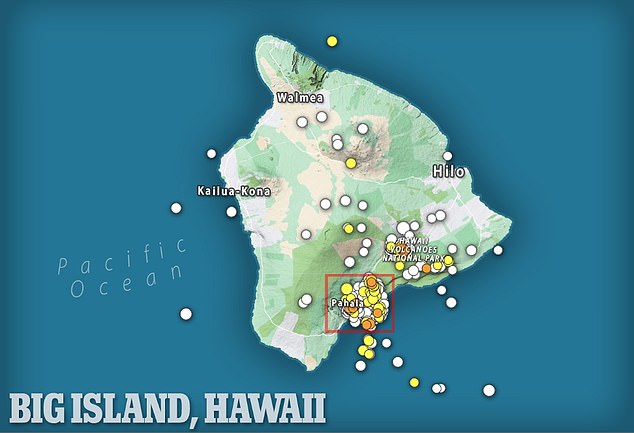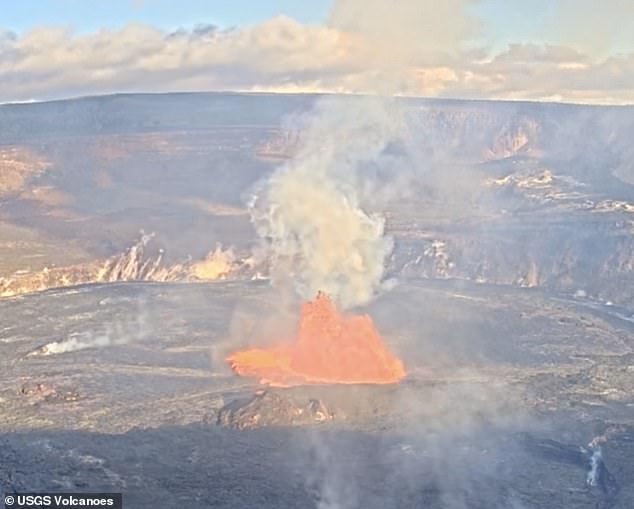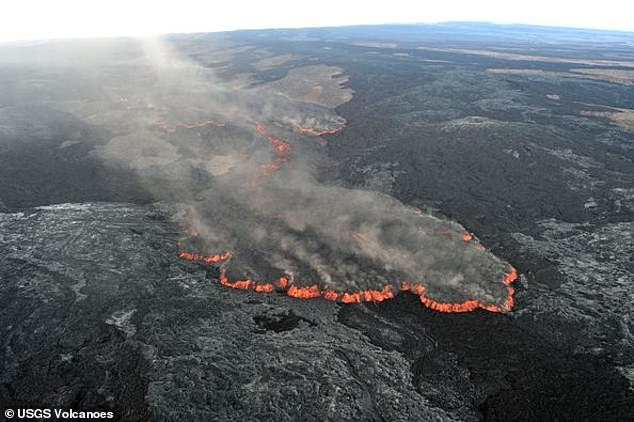The Hawaiian city that has suffered 600 earthquakes a week sits on top of an unstable magma chamber
>
Is ignorance pleasant? Hawaii city which has suffered 600 earthquakes a WEEK for the last five years, 192,000 in all, is warned, the tremors are caused by a huge underground chamber of unstable magma
- Pahala in Hawaii has experienced around 600 earthquakes per week since 2018
- Seismologists used new techniques to reveal a web of magma beneath the city.
- Earthquakes are typically ‘micro’ earthquakes and are not detected by people.
A small town in Hawaii that experiences a staggering 600 earthquakes a week is being rocked by a concentrated pool of magma directly below it, according to a study.
The number of earthquakes recorded in Pahala, a city in the south of the Big Island of Hawaii, has increased 70-fold since 2015, and seismologists have used modern imaging techniques to attribute the strong increase to a web of magma connected to a nearby volcano. .
Pahala is a small town that had a population of around 1,403 at the time of the 2020 census and was once home to a sugar plantation. According to the United States Geological Survey, it is the “most seismically active area” in Hawaii.
January is Hawaii Island Volcano Awareness Month, established in 2010 to enhance understanding of Hawaii’s volcanoes.
Pahala experiences a staggering 600 earthquakes a week and is being rocked by a concentrated pool of magma directly below it, according to a study.

Each point on the map represents an earthquake that has been detected in the last month. Pahala lies below the point group on the southern Big Island
Scientists from the California Institute of Technology published a paper in the journal Science providing a map of the seismic activity below the island connecting Pahala to the active Kilauea volcano.
The earthquakes that affect the city weekly have been classified between 1.7 and 3.0 on the Richter scale. Earthquakes with a magnitude of 2.0 or less are known as microquakes, and according to the USGS, people don’t usually feel them.
The amount of activity under Pahala increased dramatically in 2018 after the collapse of Kilauea triggered a series of lava flows that destroyed more than 700 homes.
Those eruptions in turn triggered powerful earthquakes that saw its crater grow from around 100 to 500 meters deep. Kilauea remains one of the most active volcanoes in the world.
“We harnessed advances in earthquake monitoring with deep learning algorithms to image the structures underlying a large mantle earthquake swarm of nearly 200,000 events that accelerated rapidly after the 2018 Kilauea caldera collapse,” the scientists wrote.

Images from a live broadcast of the Kilauea eruption on January 5. It is one of the most active volcanoes in the world and is located about 20 miles from Pahala.

Not only that, the seismologists also identified a magma belt connecting Pahala to another nearby volcano, Mauna Loa.
In 2019, about a year after the collapse, there was an increase in the number of earthquakes below Pahala.
‘At depths of 36-43 km, we resolved a 15 km long collection of nearly horizontal laminated structures that we identified as a umbral complex. These sills are connected to the lower depths of the Kilauea Pipeline by a 25 km long seismicity belt,” they said.
Not only that, the seismologists also identified a magma belt connecting Pahala to another nearby volcano, Mauna Loa.
